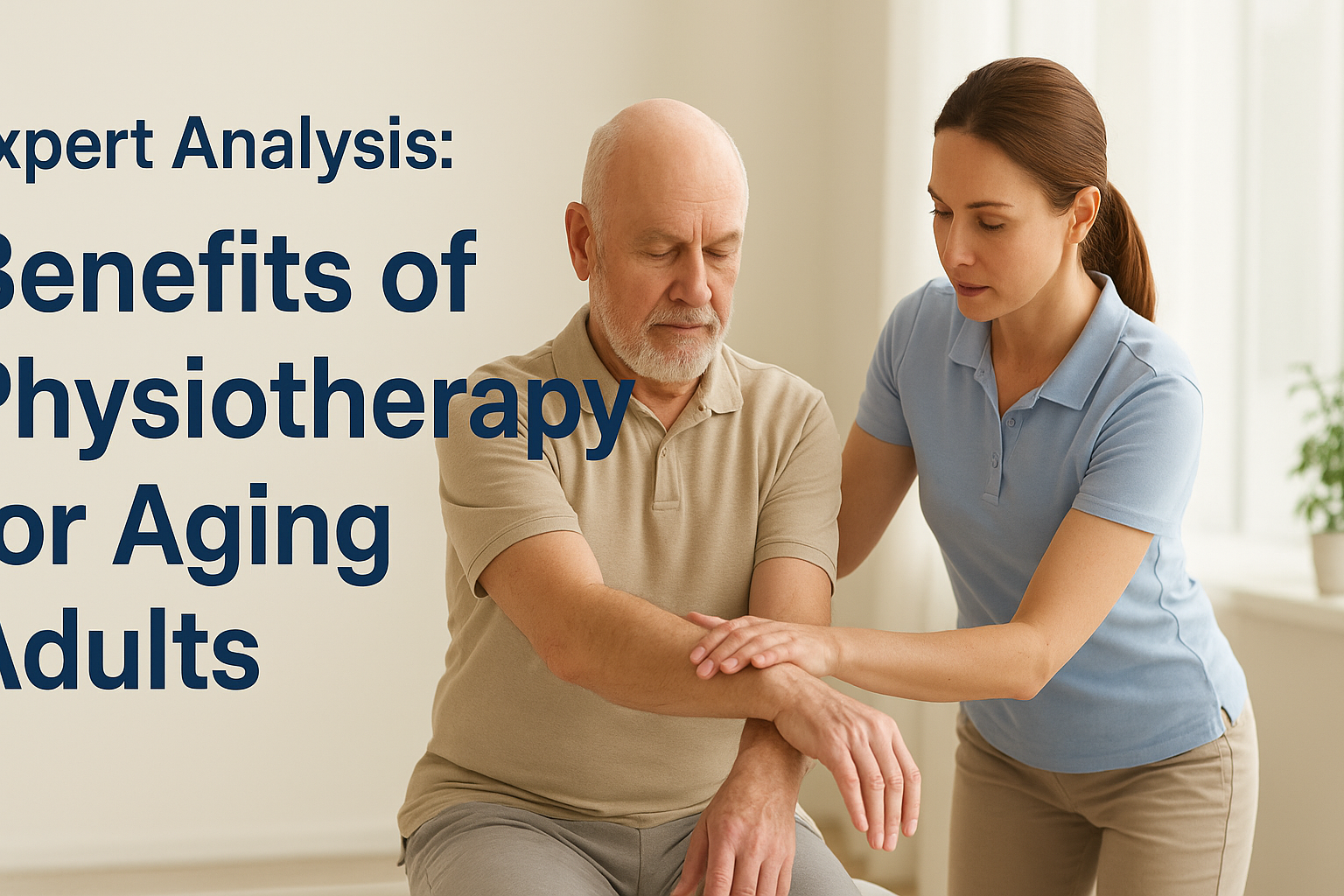Introduction: Restoring Mobility and Vitality in Aging
As we age, maintaining physical health becomes vital for independence and quality of life. Aging naturally brings changes such as muscle loss, joint stiffness, and balance issues — but with the right approach, these challenges can be managed effectively.
That’s where physiotherapy steps in.
Through expert-guided exercises and rehabilitation techniques, physiotherapy for aging adults enhances flexibility, balance, coordination, and overall well-being. In this expert analysis, we explore the key benefits of physiotherapy in aging and how it helps seniors stay strong, mobile, and confident.
1. Improves Mobility and Flexibility
With age, joints become stiffer and muscles lose elasticity, leading to difficulty in walking or climbing stairs. Physiotherapy uses targeted stretching and range-of-motion exercises to restore mobility and reduce stiffness.
Expert Insight
According to physiotherapists, consistent mobility training prevents muscle shortening and joint degeneration, allowing older adults to move more freely and comfortably.
Recommended Activities
- Gentle yoga and stretching
- Resistance band exercises
- Hydrotherapy for low-impact joint movement
2. Enhances Balance and Prevents Falls
Falls are one of the leading causes of injury in older adults. Physiotherapists focus on balance and coordination exercises that strengthen the core and improve stability.
Expert Insight
Research shows that seniors who practice balance-based physiotherapy experience up to 40% fewer falls compared to those who don’t.
Simple Balance Exercises
- Standing on one leg (with support if needed)
- Heel-to-toe walking
- Tai Chi or guided movement therapy
3. Strengthens Muscles and Bones
As we age, conditions like osteoporosis and sarcopenia (age-related muscle loss) become common. Physiotherapy combats this through strength training that increases muscle mass and bone density.
Expert Insight
Experts emphasize that progressive resistance training—when done under supervision—can safely reverse muscle decline in older adults, improving daily function and endurance.
Therapeutic Techniques
- Light weight training
- Resistance band routines
- Isometric muscle exercises
4. Manages Pain from Chronic Conditions
Conditions like arthritis, back pain, and frozen shoulder can limit mobility. Physiotherapy uses manual therapy, posture correction, and heat/cold applications to relieve chronic pain and restore comfort.
Expert Insight
Physiotherapists identify the root cause of pain — not just symptoms — and create personalized rehabilitation plans that improve function while reducing medication dependence.
Effective Methods
- Ultrasound or electrical stimulation therapy
- Joint mobilization
- Guided stretching and ergonomic correction
5. Promotes Cardiovascular and Respiratory Health
Aging can reduce heart and lung capacity, leading to fatigue and shortness of breath. Physiotherapy includes aerobic conditioning and breathing exercises to strengthen the heart and improve oxygen efficiency.
Expert Insight
Cardiorespiratory physiotherapy helps maintain stamina and reduces the risk of age-related diseases like hypertension and COPD.
Recommended Practices
- Brisk walking or light treadmill exercise
- Deep breathing and diaphragmatic techniques
- Seated cycling or aquatic therapy
6. Supports Post-Surgery and Injury Recovery
Older adults often take longer to recover from surgeries or injuries. Physiotherapy accelerates healing through gradual rehabilitation, scar tissue management, and guided exercise.
Expert Insight
Early physiotherapy intervention after surgery (like hip or knee replacement) improves joint strength and reduces recovery time by up to 30–40%.
Rehabilitation Focus
- Gentle range-of-motion exercises
- Muscle strengthening
- Gait training and mobility assistance
7. Enhances Mental Health and Emotional Well-Being
Beyond physical benefits, physiotherapy boosts mental health by promoting independence, reducing anxiety, and enhancing mood through movement and social interaction.
Expert Insight
Experts note that regular physical activity releases endorphins, the body’s natural mood enhancers, helping seniors maintain emotional balance and confidence.
Holistic Techniques
- Group physiotherapy sessions
- Mind-body exercises like Pilates or Tai Chi
- Gentle stretching combined with breathing focus
Conclusion: Active Aging Through Physiotherapy
Aging gracefully isn’t just about adding years to life—it’s about adding life to years. Physiotherapy empowers older adults to stay active, independent, and mentally vibrant.
By improving strength, mobility, and confidence, it becomes a cornerstone of healthy aging.
Whether you’re an older adult, a caregiver, or a health enthusiast, physiotherapy offers a scientifically proven, expert-backed path to a stronger, more mobile, and fulfilling life.
FAQs Section
Is physiotherapy safe for elderly people?
Yes, physiotherapy is safe when guided by licensed professionals who tailor exercises to an individual’s health conditions and mobility level.
How often should seniors do physiotherapy?
Ideally, 2–3 sessions per week are recommended, depending on health goals and recovery needs.
Can physiotherapy help arthritis and joint pain?
Absolutely. Targeted exercises and manual therapy reduce inflammation, improve joint function, and ease pain.
Does physiotherapy help after surgery?
Yes. Post-surgical physiotherapy restores strength, flexibility, and proper movement patterns safely and effectively.
What’s the best time to start physiotherapy in aging?
The earlier, the better. Starting physiotherapy in your 50s or 60s helps prevent stiffness and balance issues before they become severe.

